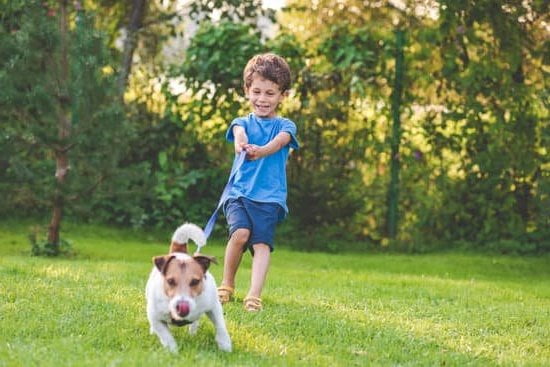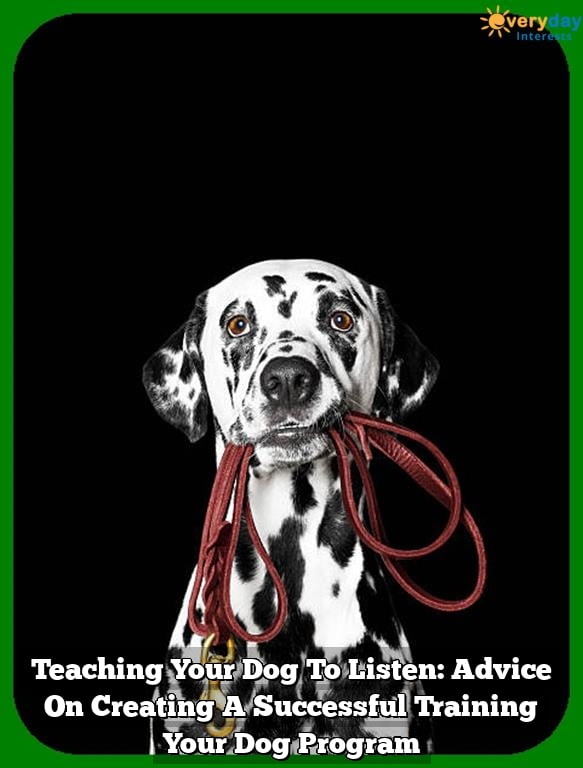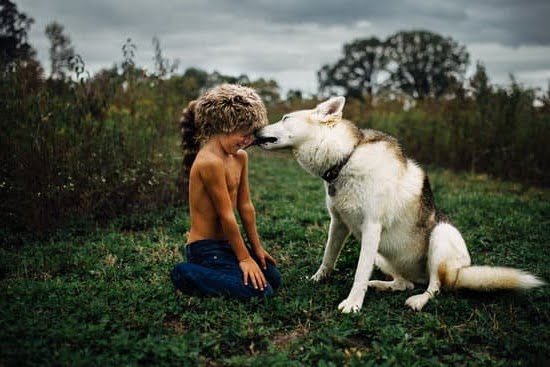Are you looking to take your dog’s trick repertoire to the next level? Have you ever wondered how to train your dog to do a backflip? Teaching your furry friend this impressive stunt requires patience, preparation, and proper technique. In this article, we will explore the step-by-step process of training your dog to perform a backflip, from understanding the physical and mental preparation needed to troubleshooting common challenges.
Training your dog to do a backflip is not just about teaching them a cool party trick; it also helps strengthen the bond between you and your pet, provides mental stimulation, and promotes physical activity. However, before diving into the training process, it is crucial to understand the importance of proper training techniques and preparation for both you and your dog.
The journey towards teaching your dog how to do a backflip begins with laying down a solid foundation of basic obedience training. This includes commands like sit, stay, come, and heel. Building a strong foundation in obedience creates a framework for more advanced tricks such as the backflip. So grab some treats and let’s get started on this exciting journey of teaching your dog an impressive trick.
Understanding the Importance of Proper Training and Preparation
Proper training and preparation are crucial when it comes to teaching your dog a complex trick like a backflip. Without the right foundation and approach, both you and your furry friend can become frustrated, and there is a risk of injury if not done correctly. This section will delve deeper into why it is important to set the stage for success before embarking on the backflip training journey with your canine companion.
Building Trust and Communication
Before jumping into advanced training, it is essential to have a strong bond of trust and clear communication with your dog. Without these fundamental aspects, trying to train your dog to do a backflip can be challenging and even counterproductive. Spend time building trust with your dog through positive interactions, consistent commands, and an understanding of their body language.
Mental and Physical Preparation
Training a dog to do a backflip requires mental focus and physical capability. Mental preparation involves assessing your dog’s readiness for advanced tricks and ensuring they are in the right frame of mind for training sessions. Physical preparation includes making sure that your dog is fit, healthy, and has developed enough strength for performing such physically demanding maneuvers. Consulting with a veterinarian or professional trainer can help determine if your dog is physically ready for backflip training.
Setting Realistic Expectations
It’s important to understand that teaching a dog to do a backflip takes time, patience, and dedication. Setting realistic expectations about the time frame and progress can help manage frustration during the training process.
Remember that each dog learns at their own pace, so be prepared to adjust your approach based on their individual capabilities. With the right mindset, commitment, and understanding of what is involved in preparing for backflip training, you can set both yourself and your dog up for success in mastering this impressive trick.
Preparing Your Dog Physically and Mentally for the Backflip Training
Before you even consider teaching your dog to do a backflip, it’s important to ensure that your furry friend is physically and mentally prepared for the training. Teaching a dog to do a backflip requires a certain level of physical fitness, coordination, and mental focus. It’s crucial to assess your dog’s overall health and well-being before attempting any advanced trick training.
To prepare your dog physically, start with regular exercise to build strength, agility, and coordination. Engage in activities such as fetch, agility courses, or long walks to keep your dog active and fit. Additionally, consider incorporating core-strengthening exercises into your dog’s routine to improve balance and stability.
On the other hand, preparing your dog mentally for backflip training involves providing mental stimulation through interactive games, puzzle toys, and obedience training. Mental agility is just as important as physical fitness when it comes to learning complex tricks like a backflip. Engaging your dog in regular training sessions will not only stimulate their mind but also create a strong bond between you and your pet.
Finally, consult with a veterinarian or professional trainer to ensure that your dog is in good physical condition before starting backflip training. It’s always best to prioritize safety and well-being when embarking on any advanced training endeavors with your canine companion.
| Physical Preparation | Mental Preparation |
|---|---|
| Regular exercise – fetch, agility courses | Interactive games and puzzle toys |
| Core-strengthening exercises | Obedience training |
| Veterinary consultation for physical readiness | Professional trainer guidance for mental preparation |
Basic Obedience Training as a Foundation for Teaching Advanced Tricks
Basic obedience training is essential for teaching your dog advanced tricks, such as a backflip. Before diving into the more complex movements, your dog should have a strong foundation in basic commands like sit, stay, come, and heel. These commands establish trust and communication between you and your dog, making it easier to progress to more challenging tricks.
Building Trust and Communication
Establishing a strong bond with your dog through basic obedience training is crucial for success in teaching advanced tricks. When your dog trusts and understands you, they will be more willing to learn new behaviors and movements. This trust also helps ensure that your dog feels safe and secure when attempting more complex tricks like a backflip.
Consistency Is Key
Consistent training sessions are essential for reinforcing basic obedience commands. Dogs thrive on routine and repetition, so regular practice will help solidify their understanding of these foundational skills. Additionally, consistent training will help prepare your dog for the mental and physical challenges of learning a backflip.
Once your dog has mastered basic obedience commands, they will be better equipped to learn the coordination and balance required for a backflip. The patience and consistency applied during basic obedience training will set the stage for successful advanced trick training, including the impressive feat of teaching your dog to do a backflip.
By building a solid foundation through basic obedience training, you can lay the groundwork for successfully teaching your dog more advanced tricks like a backflip. This foundational training establishes trust and communication with your dog while also preparing them mentally and physically for the challenges ahead. With these fundamental skills in place, you can then progress to teaching more intricate movements with patience and positive reinforcement.
Step-by-Step Guide on Teaching Your Dog to Jump and Flip
Teaching your dog to do a backflip can be an exciting and impressive trick that will surely amaze your friends and family. However, it is important to approach this training with caution and patience to ensure the safety and well-being of your furry friend. Here’s a step-by-step guide on how to train your dog to do a backflip:
1. Start with basic obedience training: Before attempting to teach your dog advanced tricks like a backflip, make sure they have mastered basic obedience commands such as sit, stay, and come. This will establish a foundation of understanding between you and your dog, making it easier for them to learn more complex tricks.
2. Build up their physical strength: The backflip requires your dog to have strong hind legs and good jumping ability. Take the time to engage in activities that will help strengthen their muscles, such as regular walks, runs, and playtime.
3. Introduce the concept of jumping: Begin by teaching your dog how to jump over small obstacles such as a low hurdle or a stick on the ground. Use positive reinforcement and rewards like treats or praise whenever they successfully jump over the obstacle.
4. Gradually introduce the flip movement: Once your dog is comfortable with jumping, start introducing the idea of adding a flip while in mid-air. You can do this by using a target stick or a lure to guide them through the flipping motion while jumping.
Remember that every dog learns at their own pace, so be patient and consistent with your training efforts. It’s also crucial to ensure their safety throughout the training process by providing proper supervision and using appropriate equipment.
| Training Step | Description |
|---|---|
| Basic Obedience Training | Mastering basic commands like sit, stay, and come |
| Physical Strength Building | Engaging in activities that strengthen muscles |
| Introducing Jumping | Teaching the concept of jumping over obstacles |
| Gradual Introduction of Flip Movement | Teaching the flipping motion while in mid-air |
Patience and Positive Reinforcement
Training your dog to do a backflip can be an exciting and rewarding experience, but it also requires a great deal of patience and positive reinforcement. This section will cover the importance of these two key elements in successfully teaching your dog this advanced trick.
Why Patience Is Crucial
Patience is essential when training your dog to do a backflip. It may take time for your dog to understand what is expected of them, and rushing the process can lead to frustration for both you and your furry friend. By remaining patient and calm, you can create a positive learning environment that will ultimately lead to success.
- Avoid showing frustration or impatience during training sessions
- Take breaks when needed to prevent burnout for both you and your dog
- Be realistic about the timeline for achieving this advanced trick
The Power of Positive Reinforcement
Positive reinforcement is a vital aspect of training any dog, especially when attempting to teach them complex tricks like a backflip. Using treats, praise, and rewards to encourage desired behavior can make the learning process enjoyable for your dog while strengthening the bond between the two of you.
- Offering treats as a reward for each small step towards performing a successful backflip
- Praising your dog enthusiastically when they make progress or perform the trick correctly
- Using toys or other rewards that motivate your dog during training sessions
By incorporating patience and positive reinforcement into your training regimen, you can increase the likelihood of successfully teaching your dog to do a backflip while also creating an enjoyable experience for both of you. Remember to celebrate every small achievement along the way and maintain a positive attitude throughout the process.
Safety Measures and Precautions to Take When Training Your Dog
Training your dog to do a backflip is an exciting and impressive trick, but it is important to prioritize safety and take necessary precautions during the training process. It is essential to ensure that the training sessions are safe for both you and your dog.
Firstly, it is important to consider your dog’s physical capabilities before attempting to train them for a backflip. Not all dogs may be physically capable of performing this trick, so it is crucial to consult with a veterinarian before beginning training. Ensure that your dog is in good health and does not have any pre-existing conditions that could be aggravated by this kind of physical activity.
Additionally, use proper safety equipment during training, such as a harness or leash, especially when teaching your dog how to jump and flip. This will prevent any accidents or injuries during the training process. Always practice in a safe environment, such as a secure, fenced area with no obstructions that could pose a danger to your dog.
Furthermore, always supervise your dog closely during training and be prepared to intervene if there are any signs of distress or discomfort. It is important to pay attention to your dog’s body language and behavior to ensure that they are not being pushed beyond their limits. Remember that the well-being of your dog should always come first when teaching advanced tricks such as the backflip.
By prioritizing safety measures and taking necessary precautions, you can create a safe and positive environment for training your dog to do a backflip, ultimately fostering a strong bond between you and your furry companion through this challenging but rewarding endeavor.
Troubleshooting Common Challenges and Obstacles in Training a Backflip
Training your dog to do a backflip can be a fun and rewarding experience, but it’s important to recognize that it may come with its fair share of challenges and obstacles. As you embark on this training journey with your furry friend, here are some common issues you may encounter and how to troubleshoot them:
Fear or Lack of Confidence
Some dogs may naturally feel apprehensive about the idea of jumping and flipping in the air. To help your dog overcome this fear, start by building their confidence through positive reinforcement and gradual exposure to the desired behavior. Use treats, toys, and praise to encourage small jumps at first, gradually working your way up to the full backflip motion.
Physical Limitations
It’s essential to consider your dog’s physical capabilities before attempting any advanced tricks like a backflip. Larger breeds or older dogs may struggle with the agility required for such a maneuver. If you notice that your dog is experiencing physical limitations, it’s crucial to consult with a veterinarian to ensure that they are fit for this type of training.
Lack of Focus or Distractions
Maintaining your dog’s focus during training sessions can be challenging, especially when teaching complex tricks like a backflip. To combat distractions, find a quiet and familiar environment for training, free from loud noises or other animals. Additionally, keeping training sessions short and engaging will help maintain your dog’s focus.
By addressing these common challenges and obstacles in training a backflip, you can ensure that both you and your dog have an enjoyable and successful experience throughout the training process. Remember to be patient, stay consistent with your methods, and always prioritize your dog’s well-being when teaching them new tricks. With time and dedication, you’ll be able to celebrate success together as you master this impressive feat.
Celebrating Success and Enjoying the Bond With Your Dog Through Advanced Training Tricks
In conclusion, training your dog to do a backflip can be a rewarding and fun experience for both you and your furry friend. It requires patience, dedication, and proper preparation to ensure the safety and well-being of your pet. By understanding the importance of proper training and taking the time to mentally and physically prepare your dog, you can create a strong foundation for teaching advanced tricks like the backflip.
Basic obedience training is crucial as it provides the necessary groundwork for teaching more complex tricks. With a step-by-step guide and plenty of positive reinforcement, you can help your dog learn to jump and flip with ease. It is important to remember that every dog learns at their own pace, so patience is key when training them to perform such advanced tricks.
As with any form of training, safety should always be a top priority. Taking precautions and recognizing common challenges will help you navigate through the training process smoothly. Through perseverance and dedication, you can celebrate success with your dog as they master the backflip.
This not only strengthens the bond between you and your pet but also provides mental stimulation and physical exercise for your furry companion. Training your dog to do a backflip is not just about teaching a trick-it’s about building trust, creating joyous moments, and enjoying a shared sense of accomplishment together.
Frequently Asked Questions
Can You Teach Your Dog to Do a Backflip?
Teaching a dog to do a backflip is not recommended, as it can be dangerous for the dog’s physical health. It requires a high level of training and can put stress on their joints.
What Is the Hardest Trick to Teach Your Dog?
The hardest trick to teach your dog varies depending on the individual dog and their abilities. Generally, complex tricks like backflips or balancing acts can be challenging due to the level of coordination and patience required.
Can Dogs Do Flips?
Dogs are capable of doing flips, but it’s important to consider their physical limitations and potential risk of injury. Some dogs may naturally perform flips during play or agility training, but it’s not something that should be forced or encouraged without proper training and consideration for the dog’s well-being.

Welcome to the blog! I am a professional dog trainer and have been working with dogs for many years. In this blog, I will be discussing various topics related to dog training, including tips, tricks, and advice. I hope you find this information helpful and informative. Thanks for reading!





